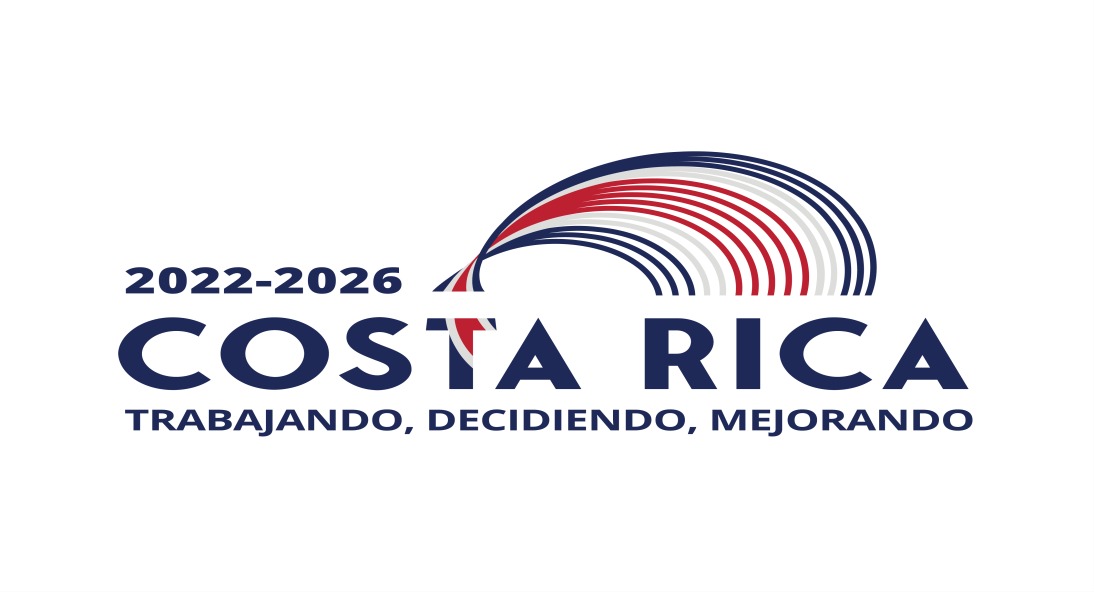Description of Activities and Sub-activities of the Payment for Environmental Services Program -PSA- Fonafifo-MINAE
Department of Environmental Services Management
The modalities correspond to the two modalities established by SINAC through Executive Decree N ° 39660-MINAE, Digital Scope No. 108 of Wednesday, June 29, 2016. The two Modalities correspond to: Maintenance of Forestry Coverage that contains the activities, namely: Protection, Protection of Water Resources and Post Harvest Protection, and Recovery of Forest Cover, which includes Reforestation, Regeneration and Agroforestry Systems.
The conditions of the resource that are incorporated into the different payment activities of the PSA are set out below. According to global initiatives, such as the Summit and the Rio Declaration on Environment and Development, the Agenda 21, the international conventions on climate change, the fight against desertification and biological diversity, the Kyoto Protocol, the Forest Principles and, more recently, the Millennium Goals and the Johannesburg Summit. Additionally, Costa Rica has the necessary provisions to safeguard the right of all inhabitants to enjoy a healthy and balanced environment through the conservation of natural forests.
Objetive:
The objective of the Forest Protection activity is to conserve and protect natural resources and at the same time preserve the environmental services they provide, within the framework of sustainable development.
Definition:
The projects that are established in the forest, which corresponds to a native or autochthonous ecosystem, intervened or not, regenerated by natural succession or other forestry techniques, that occupies an area of two hectares up to three hundred hectares per year, except for the indigenous territories that can contract up to one thousand hectares per year. Characterized by the presence of mature trees of different ages, species and varied size, with one or more canopies that cover more than seventy percent (70%) of that surface and where there are more than sixty trees per hectare of fifteen or more centimeters of diameter measured at chest height (DAP), according to the definition of forest established in Forest Law No. 7575.
Objective:
The objective of the sub-activity Protection of Water Resources is to conserve and protect natural resources, specifically the protection of water resources within the basins where the environmental service is generated.
Definition:
The projects that are established in forest areas in aquifer recharge zones, which occupy an area of two to three hundred hectares per year, except for indigenous territories that can contract up to 1,000 hectares per year. The forest complies with the definition of forest established in Forest Law No. 7575.
They correspond to land areas in which the main infiltration that feeds a given aquifer occurs, according to the delimitation established by MINAE, by administrative resolution, after consultation with the Costa Rican Institute of Aqueducts and Sewers, the National Irrigation and Drainage Service or another entity technically competent in matters of water.
Also, private lands with forest within a basin that is located in areas of importance for the proven sustainability of the water regime, in accordance with the criteria defined in the National Plans and Programs in this matter, as established in Article 14 of Executive Decree No. 32868- MINAET (Canon for Water Use Concept).
In addition, it contemplates areas of water importance identified by the Water Directorate and Fonafifo, or other instances of MINAE and the forest areas whose main function is the protection of the water resource, considered of interest for rural aqueducts, Aqueduct and Sewerage projects and Public utility companies, which must be supported by a certification issued by the administrator of the respective aqueduct.
Objective:
The objective of the Reforestation activity is to establish forest plantations with native and exotic species, both for productive and conservation purposes.
Within this activity, sub-activities have been created: depending on the cutting cycles of the species (fast or medium growth); use of wood (for manufacturing packaging); extended (if the companies or interest groups exceed 750 ha in current contracts) and with own resources (pre-established projects).
Definition:
Reforestation projects are established in lands from one to three hundred hectares, cultivated with one or more native and exotic species. Which are established in sites that present a high productive potential for the development of forest plantations according to the land use capacity. With a density of eight hundred and sixteen trees per hectare.
Objective:
The objective of the sub-activity Reforestation with Native Species in Extinction, is to establish specifically forest plantations with species contained in the decrees of closed and threatened or endangered species (Decree No. 25663-MINAE and Decree No. 25700-MINAE and its reforms ) and that contribute with environmental services. To promote the establishment of species due to the ecological importance of the species in danger of extinction.
Definition:
Reforestation projects are established on land of one to three hundred hectares, cultivated of one or more species contained in the decrees of closed and threatened or endangered species. Which are established in sites that have a high productive potential for the development of forest plantations according to the capacity of land use. With a density of eight hundred and sixteen trees per hectare. The species that corresponds to this modality are indicated below.
Objective:
The objective of Natural Regeneration in this sub-activity, is to conserve and protect natural resources in denuded sites or paddocks, to favor the recovery of vegetation and at the same time contribute to the environmental services that these provide.
Definition:
The projects that are established in denuded lands of forest aptitude in an area of two to three hundred hectares, to regenerate them in forest. It also corresponds to land with pastures and pastures that due to site conditions have a low potential for regeneration, which are abandoned for at least one year and free of grazing and should consider, considering the initial successional status of the paddock.
Objective:
The objective of the Agroforestry Systems activity is to establish agricultural or agricultural systems, which include trees interspersed with crops and / or pastures. The Agroforestry Systems contain a high number of trees, these trees fulfill many purposes such as production (wood, firewood, fodder, fruits, medicines, etc.) as well as services (shade for crops and / or animals, protection as in the case of windbreaks, etc.) and that contribute to environmental services.
Definition:
Projects in agroforestry systems are defined as all those in which agricultural production is based on a polyculture of tree species with endangered species, with others of a herbaceous nature. These systems have an arrangement of physical components, a set or collection of things, united or related in such a way that they form and act as a unit, an entity or a whole. They are established on land with capacity for use I, II, III, IV and V. With a minimum of three hundred and fifty trees up to five thousand trees, except indigenous territories that can hire up to one hundred thousand trees per year.
The projects are established in areas with combination in time and space of trees of extinct forest species, with annual crops, perennial crops, forage species, fruit trees or others, in pursuit of the sustainability of the system. In which there are different arrangements of trees with crops, trees in rows, windbreaks, plantations in blocks of less than one hectare and silvopastoral systems that are detailed below.
Arrangements and List of Accepted Forest Species for the Establishment of Forest Trees in Agroforestry Systems:
The maximum number of trees per hectare and / or kilometer for agroforestry systems to be established, will be as described:
- Timber trees in perennial crops between forty and two hundred and fifty trees per hectare, of the species in danger of extinction.
- Block plantations of less than one hectare, with a maximum density of six hundred and twenty-five trees per hectare. It is considered a maximum of five blocks per beneficiary (a) per year, with species in danger of extinction.
- Taungya systems and improved fallows, only and exclusively in the Indigenous Territories.
- The agroforestry arrangements must not exceed the twelve months prior to the signing of the contract, this to guarantee a reseeding in the event that the mortality percentage is higher than 10%.
- Arrangements in perennial crops correspond to coffee, cocoa, banana, citrus, hearts of palm, oil palm and pastures.
Objective:
The objective of the sub-activity Agroforestry Systems in Coffee is to establish agricultural systems, which include trees interspersed with crops specifically with coffee. The Agroforestry Systems contain a high number of trees, these trees fulfill many purposes such as production (wood, firewood, fodder, fruits, medicines, etc.) as well as services (shade for crops) and that contribute with environmental services.
Definition
Projects in coffee agroforestry systems are defined as those in which agricultural production is based on a polyculture of tree species, with others of a herbaceous nature. These systems have an arrangement of physical components, a set or collection of things, united or related in such a way that they form and act as a unit, an entity or a whole. They are established on land with capacity for use I, II, III, IV and V. With a minimum of three hundred and fifty trees up to five thousand trees, except for indigenous territories that can hire up to one hundred thousand trees per year.
The projects are established in areas with combination in time and space of trees of forest species with perennial crops, in pursuit of the sustainability of the system. In which there are different tree arrangements with crops, which are detailed below.
Arrangements and List of Accepted Forest Species for the Establishment of Forest Trees in Coffee Agroforestry Systems
The maximum number of trees per hectare and / or kilometer for agroforestry systems in coffee to be established, will be as described:
- Timber trees in perennial crops between forty and two hundred and fifty trees per hectare, of the species: laurel (Cordia alliodora), cedar (Cedrela spp), mahogany (Swietenia macrophylla), eucalyptus (Eucalyptus spp.), Jaúl (Alnus acuminata), amarillon (Terminalia amazonia), Ronron (Astronium graveolens), Pilón (Hieronima alchornoides), Melina (Gmelina arborea), Gallinazo (Schizolobium parahyba), Espavel (Anacardium excelsum), Guayacán (Tabebuia guajava), Naked Indian (Bursera simarouba), Pochote (Bombacopsis quinata), bait (Vochysia guatemalensis or hondurensis) and botarrama (Vochysia ferruginea), or any other timber species that meets the definition of forest tree indicated in the regulations of Forest Law N ° 7575.
- Trees of multiple use and timber in perennial crops between forty and two hundred and seventy seven trees per hectare, of the species: poró (Erythrina spp.), Guava (Inga spp.), Black wood (Gliricidia sepium), Leucaena (Leucaena leucocephala ). 50% of trees of multiple use and 50% timber that meet the definition of forest tree that is indicated in the regulation to Forest Law No. 7575.
- Taungya systems and improved fallows, only and exclusively in the Indigenous Territories.
- The agroforestry arrangements must not exceed the twelve months prior to the signing of the contract, this to guarantee a reseeding in the event that the mortality percentage is higher than 10%.
- The arrangements in perennial crops correspond to coffee.
In all cases, the species used must adapt to the specific conditions of the site and the agroforestry system, as well as receive an appropriate silvicultural management. Other forest species can be used, as long as they adapt to the site according to their biological and ecological conditions.
Objective:
The objective of the sub-activity Agroforestry Systems with Extinction Species, is to establish agricultural or agricultural systems, which include trees interspersed specifically with species contained in the decrees of closed and threatened or endangered species (Decree No. 25663-MINAE and Decree No. 25700 -MINAE and its reforms), with crops and / or pastures and that contribute with environmental services.
The Agroforestry Systems contain a high number of trees, these trees fulfill many purposes such as production (wood, firewood, fodder, fruits, medicines, etc.) as well as services (shade for crops and / or animals, protection as in the case of windbreaks, etc.) and that contribute to environmental services. To promote the establishment of species due to the ecological importance of the species in danger of extinction.
Objetive:
The objective of the sub-activity Mixed Systems, is to establish agricultural or agricultural systems, which include trees and forest or regeneration in small farms less 10 hectares.
Definition:
The projects are established in areas with combination in time and space of trees of forest species, with annual crops, regeneration in 0.5 to 5 hectares in forest and regeneration, and until 1,600 trees in agroforestry systems.
Objective:
Forest Management projects aim to protect natural resources in real estate that have management plans approved by the State Forestry Administration, in which the final harvest was carried out and which contribute to environmental services.
Definition:
Projects that are established in a forest, which corresponds to a native or autochthonous ecosystem, intervened with a management plan and which is already closed, which occupies an area of between two hectares and up to three hundred hectares per year.



